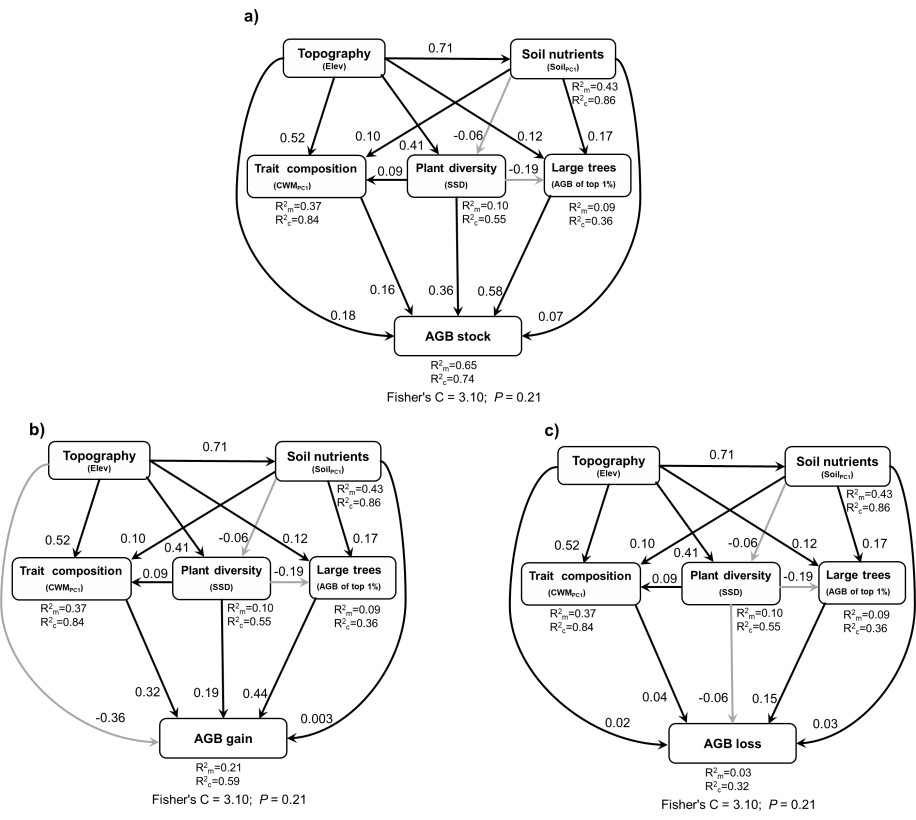Critical Minority of Large-diameter Trees Are More Important than Plant Diversity for Driving Forest Dynamics
Large-diameter trees in forests take several years or even centuries to develop, but human or natural disturbances, such as extreme drought and strong wind, can decline their abundance, rapidly changing forest structure and ecosystem services. Previous study suggested that the largest 1% of trees ≥1cm at breast height (DBH) comprised 50% of aboveground live biomass (AGB), relatively little is known about their distinctive role, interplaying with abiotic and biotic drivers, in shaping forest AGB dynamics (i.e., gain and loss) at regional or larger extents.
A research team from the Institute of Applied Ecology of the Chinese Academy of Sciences is monitoring the forest diversity and dynamics based on fifteen permanent plots in Changbai mountain area in northeast China, and their recent study revealed that secondary forests had higher AGB gain, net change, but lower loss than intact forests, and the AGB of top 1% trees was a better proxy than plant diversity for AGB dynamic.
The researchers further found that the cumulative relative contribution of for AGB gain and loss showed a strong asymptotic relationship with increasing DBH threshold values.
Their work showed that topography could regulate the stand structure, plant diversity and AGB dynamic of temperate forests. “Our work highlighted the importance of large-diameter trees relative to plant diversity and trait composition on forest demographic processes, indicating the necessity of the monitoring of a few large-diameter trees instead of all size classes trees for inferring AGB stock and dynamics via either forest inventory or remote sensing approaches,” said Zuoqiang Yuan.
The paper entitled “Few large trees, rather than plant diversity and composition, drive the above-ground biomass stock and dynamics of temperate forests in northeast China” has recently been published in Forest Ecology and Management based on this study.
The study was financially supported by Strategic Priority Research Program of the Chinese Academy of Sciences, the National Natural Science Foundation of China, and Youth Innovation Promotion Association CAS.

Fig 1. Cumulative relative contribution of trees at different diameter at breast height (DBH) threshold values on aboveground biomass stock, gain and loss in 15 forest plots. The graphic in each figure is enlarged for large-diameter thresholds (i.e. from 90% to 100%) (Image by YUAN Zuoqiang).

Fig 2. Results from the piece-wise structural equation models (pSEMs) that explore the effects of topography, soil nutrients, stand structural diversity, functional trait composition, and aboveground biomass (AGB) of top 1% trees on a) AGB stock, b) AGB gain, and c) AGB loss in temperate forests (Image by YUAN Zuoqiang).
Contact
YUE Qian
Institute of Applied Ecology, Chinese Academy of Sciences
Tel: 86-24-83970324
E-mail: yueqian@iae.ac.cn
Web: http://english.iae.cas.cn



